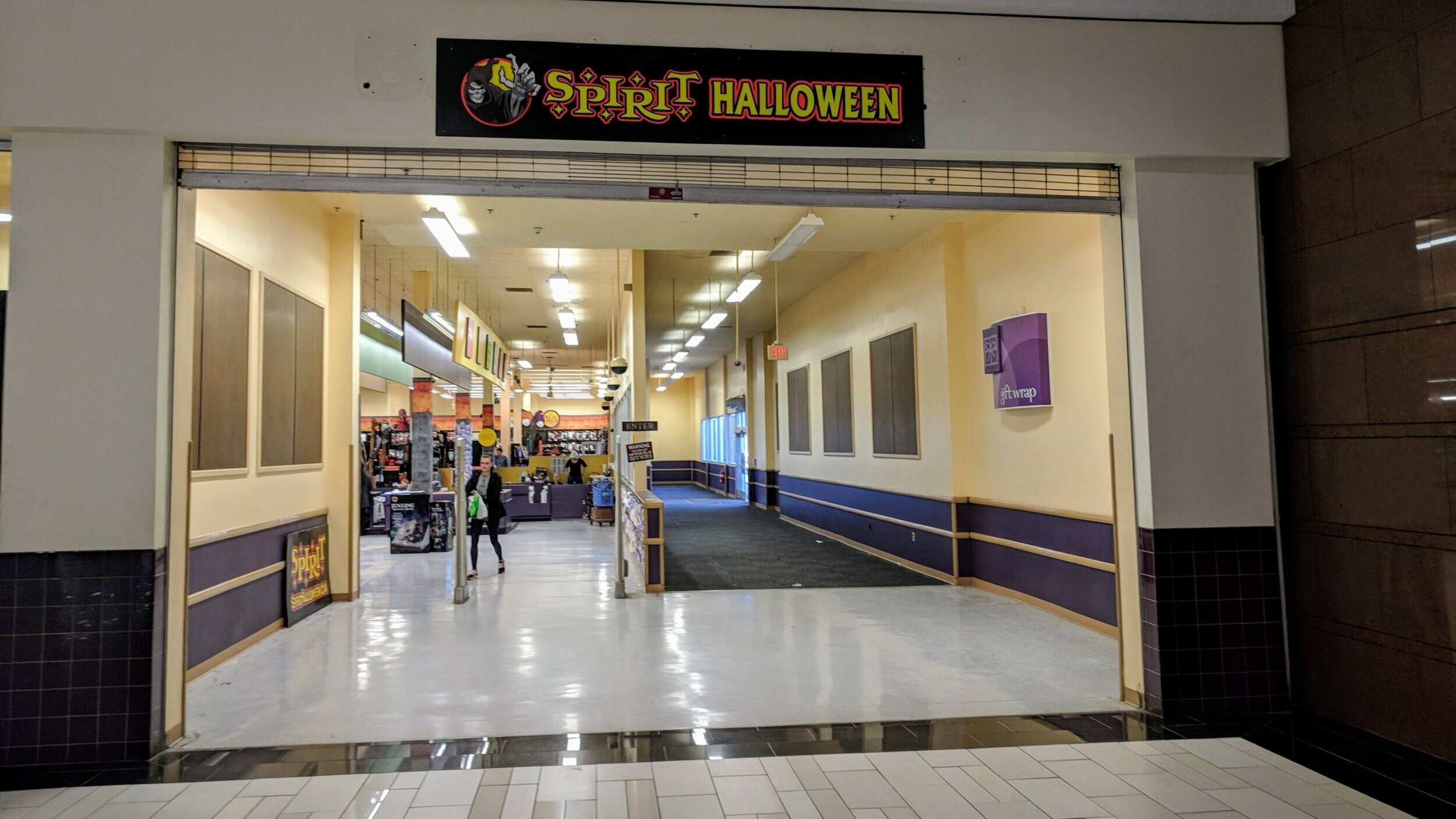About that Spirit Halloween Store You Always See Around This Time of Year...
It’s that time of year again: bags of candy are showing up in the supermarket, pumpkins are appearing on doorsteps and Spirit Halloween banners are popping up over derelict shopping malls and big box storefronts.
What exactly is up with these Halloween costume stores that arrive without fail every fall, only to pack up and leave a couple months later? I visited the Spirit website and found five different locations in my metro area and many more farther out of town. They drop down in abandoned malls and empty big box stores, making temporary use of these hulking spaces.
Should we laud the Spirit Halloween as a creative pop-up shop, putting an otherwise empty space to better use, even if only for a couple months?* Or are these stores merely a sign of the flawed and fatal nature of the suburban development pattern that gobbles up public and private resources at extreme rates, only to abandon their new creations to obsolescence within a decade or two?
I think you can probably tell by my tone that I’m inclined toward the latter, but I’m willing to entertain the first question.
Strong Towns guest contributor, Addison Del Mastro, wrote about the repurposing of suburban buildings and parking lots last month into things like thrift stores and taco truck space. “While I might once have just seen run-down buildings through my windshield and kept on driving, now I see people doing what they can with what they have,” he writes. “It’s not perfect. […] But it’s better than abandonment and blight.” He has a point. I would much rather see an old Kmart used as a Halloween costume store, even if it’s only temporary, than have that store go empty in perpetuity, and I’m sure the owners of the building would, too.
Interestingly, Spirit Halloween actually got its start with a model that made much better use of space, according to a New York Times article: A dress shop owner temporarily turned his clothing store into a Halloween costume shop during the fall months, and then brought the dresses back out come November. Eventually he decided to shift his business to completely focus on the costume side of things.
Today’s Spirit is pretty much a bottom-feeder business that works only at the expense of other stores; if there weren’t vacant storefronts, this business wouldn’t exist. Or, as the Times puts it, “Spirit is merrily feasting on the corpses of its fallen foes.”
Of course, there are other “pop-up” uses we all see in our communities from time to time that we might be more fond of. Christmas tree lots are a great example. They typically appear in a parking lot or vacant lawn in early December, and for a month, that space is activated with holiday music, twinkle lights, and the smell of hot cocoa. Seasonal Christmas shops sometimes pick up where the Spirit Halloween shop left off, too, filling a big box store in November and December with light-up snowmen, shiny ornaments, and plastic Santas. Whole carnivals and flea markets will roll into town for a week or two, occupying a parking lot or spacious park. Farmers markets set up shop in a public square on Saturdays from May to September. There’s plenty to like and appreciate about a temporary shop that provides an opportunity for entrepreneurs to sell their wares and activates an empty space.
Overall, I think a true strong town would make space for these seasonal uses and welcome them as part of the local business landscape. At the same time, a strong town wouldn’t have endless vacant big box stores and parking lots for a Spirit Halloween to occupy, in the first place. Maybe seasonal shops could take turns with a rotating storefront downtown; there’s no reason a single space couldn’t be a Halloween store from September–October, a Christmas store from November–December, and a beach-gear store from May–August. Or maybe these shops would fill in during temporary vacancies of commercial spaces, between random store tenants.
The bottom line is: We shouldn’t be building a world where it’s normal to have dozens of vast empty stores propped up by millions of taxpayer dollars in public infrastructure. We can be happy when these stores are temporarily used (although I don’t, personally, find anything particularly celebration-worthy about a national company peddling cheap goods probably made by poorly-treated foreign workers that likely pays minimum wage to a handful of U.S.-based temporary store employees, does nothing to build lasting local wealth, then picks up and leaves a month later).
But, for our pop-up shop inspiration, we should be looking to the hot dog stand operator who might one day invest in his own storefront, or the local farmers who sell their vegetables at the market on Sundays. If you want a strong town, you’re probably not going to find it inside a Spirit Halloween.
* Credit goes to my colleagues for pitching in their ideas for this article and encouraging me to think beyond my pessimism.







Rachel Quednau serves as Program Director at Strong Towns. Trained in dialogue facilitation and mediation, she is devoted to building understanding across lines of difference. Previously, Rachel worked for several organizations fighting to end homelessness and promote safe, affordable housing at the federal and local levels. Rachel also served as Content Manager for Strong Towns from 2015-2018. A native Minnesotan and honorary Wisconsinite, Rachel received a Masters in Religion, Ethics, and Politics from Harvard Divinity School and a Certificate in Conflict Transformation from the Boston Theological Interreligious Consortium, both in 2020. She currently lives in Milwaukee, Wisconsin, with her husband and young son. One of her favorite ways to get to know a new city is by going for a walk in it.